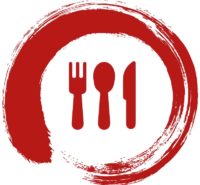The Sustainable food theme allows students to examine the links between food production and the environment. The theme also covers questions regarding to access and health. All these aspects make it a very interesting theme to implement in a school project.
Sustainable food
SUSTAINABLE FOOD
The UN Food and Agriculture Organization (FAO) defined the term “sustainable diet” in 2010, stating: “Sustainable diets are protective and respectful of biodiversity and ecosystems, culturally acceptable, accessible, economically fair and affordable; nutritionally adequate, safe and healthy; while optimizing natural and human resources”.
The ways we consume now, however, are often unhealthy and very unfair. On the one hand, famine is a global scourge; on the other, the World Health Organization (WHO) is sounding the alarm about another nutrition-related problem: obesity. Food remains a local and global issue, with a particular impact on the environment. Current food production practices have a severe impact on natural environments and contribute to climate change.
A shift towards more sustainable food systems and diets is needed to guarantee food and nutritional safety, biodiversity and the quality of resources.
WHAT CAN WE DO?
In Switzerland, a large proportion of the food we produce is wasted or thrown away between the point of production and our plates. These losses amount to one whole meal per person, per day – or two million tonnes of food every year. Apart from the ecological and societal considerations, reducing food waste also produces significant savings.
Promoting locally produced and seasonal food also helps to limit transport, get access to fresher food, limit your carbon footprint and support the local economy and know-how. Shorter food circuits encourage local agriculture by supporting regional commerce.
EXAMPLES OF LINKS TO THE CURRICULUM
Primary level: Science, Cooking: See, touch, taste and cook seasonal fruit and vegetables
Middle level: German/Italian/Spanish/…: Discuss in a foreign language taught at school your favourite food, where it grows and in what season
Secondary level: Economics and Geography: Study worldwide food distribution channels and their economic, social and ecological impact


THEY MADE IT
-> A visit to a local farm
-> Calculation of the energy value of foods
-> A reduction in the amount of packaging in the canteen
-> Unpackaged and healthy afternoon snacks for pupils
-> Writing / reading a cooking recipe in English or a foreign language
-> Discover food specialties of student’s countries of origin
-> Use of vegetables from the school’s garden in a cooking class
LINK SUSTAINABLE FOOD TO THE SDGs
